#WW2
Text
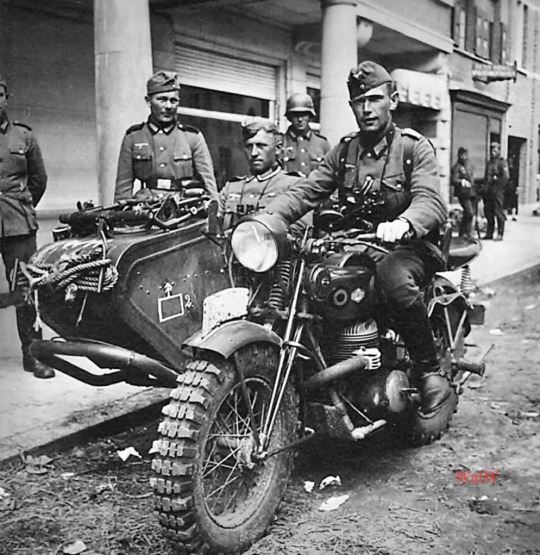
A German motorcycle rider sits on what appears to be a captured Belgian Gillet Herstal AB720 motorcycle on a city street presumably in Belgium - date unknown. Note, on the sidecar the 2nd sapper battalion badge appears to have been marked.
#world war two#ww2#worldwar2photos#history#1940s#ww2 history#wwii#world war 2#ww2history#wwii era#herstal#gillet#motorcycle riders#motorcycle#Belgium#sapper
72 notes
·
View notes
Text
#reinhard heydrich#germany#allemagne#history#deutschland#ww2 germany#histoire#ww2#world war 2#seconde guerre mondiale#ww2 history#ww2 photo#german soldiers#german army#germania#german soldier#ss#deustchland
37 notes
·
View notes
Text
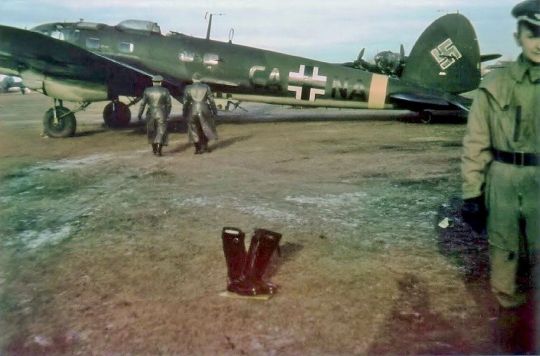
Heinkel He 111P-2 (CA+NA) W.Nr. 2471 of the Fliegerstaffel des Führers (F.d.F.) during a visit of Adolf Hitler to the southern sector of the Eastern Front, March-May 1942. For more, see my Facebook group - Eagles Of The Reich
#germany#ww2#luftwaffe#ww2 aircraft#heinkel#he 111#eastern front#Fliegerstaffel des Führers#1942#adolf hitler
22 notes
·
View notes
Text
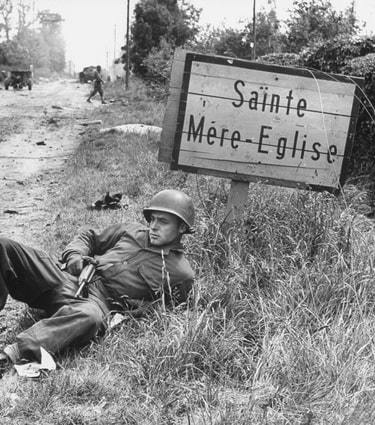

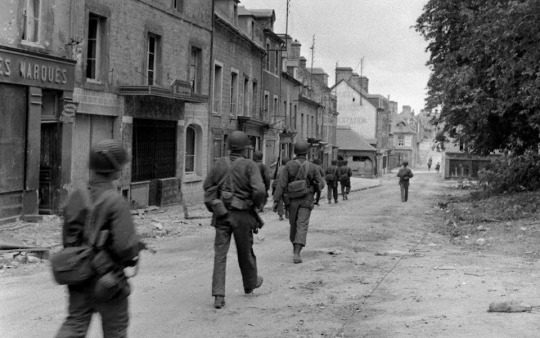

29 notes
·
View notes
Text
so in an attempt to actually use positive thinking, anytime i fuck up and my brain reacts as if ive cause a minor apocalyptic event, i compare my fuck up to the 4 minute fuck up committed by the crew of the uss william d porter.
and only today, as i was having to explain what happened to my mom when i was explaining the whole comparison thing, did i realise that most people dont know about it and ive decided that needs to change because its objectively hilarious.
...which is a weird thing to say about an event that occured on a warship in 1943, specifically november 14th.
see the uss william d porter was a fletcher-class destroyer but you dont need to know what that means, just that she had guns that went bang bang and that she was escorting another ship, the uss iowa, to cairo.
while they were on their way there, they performed some gun trials like testing the anti-aircraft guns or the torpedos. and while they were running a torpedo drill, the crew of the porter managed to fire a live torpedo straight at the iowa which you know, in terms of a list of things to do while escorting a ship, shooting a torpedo at them is not on that list.
especially if the president of the united states is on board.
yeah so fdr was on board and the gun trials were actually his idea, and part of the trials was that they were conducted under radio silence.
and that means the crew of the porter couldnt just call the iowa to be like "move out the way, we accidentally shot a torpedo at you."
but they did have signal lamps and you know, the signalman on board was trained to signal this exact kind of message.
...and uh never mind, the signalman did manage to successfully tell the iowa that a torpedo was coming toward them but wasnt as successful when it came to the direction the torpedo was coming from.
not all hope is lost though because the signalman could still use the signal lamp to correct his previous mistake and-, never mind, he announced that the porter was reversing, which she wasnt.
yeah so at catastrophic mistake number 3, they broke radio silence to warn the iowa and she managed to turn out of the way just in time which meant no one got hurt. and even though the inquiry into the incident led to chief torpedoman (fantastic job title btw) lawton dawson being sentences to hard labour, fdr intervened and waved away his sentence, saying it was all an accident.
but yeah, so thats my new measure for "how much did i really fuck up?" and when i compared accidentally picking up a pencil case without a tag on it in wilko, turns out it was a very minor fuck-up. yes, the cashier had to ask another worker to grab a duplicate so they could scan the barcode, but i didnt nearly kill the president during wartime via accidental friendly fire
#kai rambles#so like#i enjoy ships and learning about them and looking at them but like#i dont really care for warships#i dont hate them viscerally like i do cruise ships but i never really care for them#apart from the ones that were just like either ridiculously designed like the hms captain or the vasa or the novgorod#or the ones where just insane shit happened like with the william d porter#like this isnt even the extent of the porters unfortunate incidents like shr was sank by a kamikaze attack that MISSED#but somehow ended up below the ship and exploded and just like yeeted the porter out of the water#william d porter#uss william d porter#ww2#world war 2#world war ii#warships#again warships are really not my thing but god some of them are so fucking funny#uss iowa#fdr#franklin d. roosevelt#this suddenly got so many notes in like less than 24 hours what the fuck#shipposting
15K notes
·
View notes
Text
I saw this on quora and thought it was cool and wanted to share it on here. Its a long read but crazy. Its from Erik Painter

They did try. And they did capture Navajo men. However, they were unsuccessful in using them to decipher the code. The reason was simple. The Navajo Code was a code that used Navajo. It was not spoken Navajo. To a Navajo speaker, who had not learned the code, a Navajo Code talker sending a message sounds like a string of unconnected Navajo words with no grammar. It was incomprehensible. So, when the Japanese captured a Navajo man named Joe Kieyoomia in the Philippines, he could not really help them even though they tortured him. It was nonsense to him.
The Navajo Code had to be learned and memorized. It was designed to transmit a word by word or letter by letter exact English message. They did not just chat in Navajo. That could have been understood by a Navajo speaker, but more importantly translation is never, ever exact. It would not transmit precise messages. There were about 400 words in the Code.
The first 31 Navajo Marines created the Code with the help of one non-Navajo speaker officer who knew cryptography. The first part of the Code was made to transmit English letters. For each English letter there were three (or sometimes just two) English words that started with that letter and then they were translated into Navajo words. In this way English words could be spelled out with a substitution code. The alternate words were randomly switched around. So, for English B there were the Navajo words for Badger, Bear and Barrel. In Navajo that is: nahashchʼidí, shash, and tóshjeeh. Or the letter A was Red Ant, Axe, or Apple. In Navajo that is: wóláchííʼ, tsénił , or bilasáana. The English letter D was: bįįh=deer, and łééchąąʼí =dog, and chʼįįdii= bad spiritual substance (devil).
For the letter substitution part of the Code the word “bad” could be spelled out a number of ways. To a regular Navajo speaker it would sound like: “Bear, Apple, Dog”. Or other times it could be “ Barrel, Red Ant, Bad Spirit (devil)”. Other times it could be “Badger, Axe, Deer”. As you can see, for just this short English word, “bad” there are many possibilities and to the combination of words used. To a Navajo speaker, all versions are nonsense. It gets worse for a Navajo speaker because normal Navajo conjugates in complex ways (ways an English or Japanese speaker would never dream of). These lists of words have no indicators of how they are connected. It is utterly non-grammatical.
Then to speed it up, and make it even harder to break, they substituted Navajo words for common military words that were often used in short military messages. None were just translations. A few you could figure out. For example, a Lieutenant was “one silver bar” in Navajo. A Major was “Gold Oak Leaf” n Navajo. Other things were less obvious like a Battleship was the word for Whale in Navajo. A Mine Sweeper was the Navajo word for Beaver.
A note here as it seems hard for some people to get this. Navajo is a modern and living language. There are, and were, perfectly useful Navajo words for submarines and battleships and tanks. They did not “make up words because they had no words for modern things”. This is an incorrect story that gets around in the media. There had been Navajo in the military before WWII. The Navajo language is different and perhaps more flexible than English. It is easy to generate new words. They borrow very few words and have words for any modern thing you can imagine. The words for telephone, or train, or nuclear power are all made from Navajo stem roots.
Because the Navajo Marines had memorized the Code there was no code book to capture. There was no machine to capture either. They could transmit it over open radio waves. They could decode it in a few minutes as opposed to the 30 minutes to two hours that other code systems at the time took. And, no Navajo speaker who had not learned the Code could make any sense out of it.
The Japanese had no published texts on Navajo. There was no internationally available description of the language. The Germans had not studied it at the time. The Japanese did suspect it was Navajo. Linguists thought it was in the Athabaskan language family. That would be pretty clear to a linguist. And Navajo had the biggest group of speakers of any Athabaskan language. That is why they tortured Joe Kieyoomia. But, he could not make sense of it. It was just a list of words with no grammar and no meaning.
For Japanese, even writing the language down from the radio broadcasts would be very hard. It has lots of sounds that are not in Japanese or in English. It is hard to tell where some words end or start because the glottal stop is a common consonant. Frequency analysis would have been hard because they did not use a single word for each letter. And some words stood for words instead of for a letter. The task of breaking it was very hard.
Here is an example of a coded message:
béésh łigai naaki joogii gini dibé tsénił áchį́į́h bee ąą ńdítį́hí joogi béésh łóó’ dóó łóóʼtsoh
When translated directly from Navajo into English it is:
“SILVER TWO BLUE JAY CHICKEN HAWK SHEEP AXE NOSE KEY BLUE JAY IRON FISH AND WHALE. “
You can see why a Navajo who did not know the Code would not be able to do much with that. The message above means: “CAPTAIN, THE DIVE BOMBER SANK THE SUBMARINE AND BATTLESHIP.”
“Two silver bars” =captain. Blue jay= the. Chicken hawk= dive bomber. Iron fish = sub. Whale= battleship. “Sheep, Axe Nose Key”=sank. The only normal use of a Navajo word is the word for “and” which is “dóó ”. For the same message the word “sank” would be spelled out another way on a different day. For example, it could be: “snake, apple, needle, kettle”.
Here, below on the video, is a verbal example of how the code sounded. The code sent below sounded to a Navajo speaker who did not know the Code like this: “sheep eyes nose deer destroy tea mouse turkey onion sick horse 362 bear”. To a trained Code Talker, he would write down: “Send demolition team to hill 362 B”. The Navajo Marine Coder Talker then would give it to someone to take the message to the proper person. It only takes a minute or so to code and decode.
youtube
31K notes
·
View notes
Text
Fun fact: Brazil joined the Allied powers to liberate Italy from the Nazis late during WW2. Our troops were incredibly unprepared and frankly had no expectations of ever fighting in the war. But when they got there, the Brazilian troops were apparently so fucking chaotic and batshit crazy that it even frightened the Nazis. This is what a German captain had to say about it:
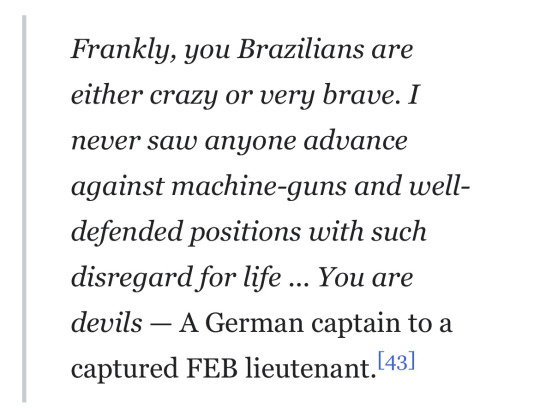
6K notes
·
View notes
Text
there are many benefits to being a Naval Salior
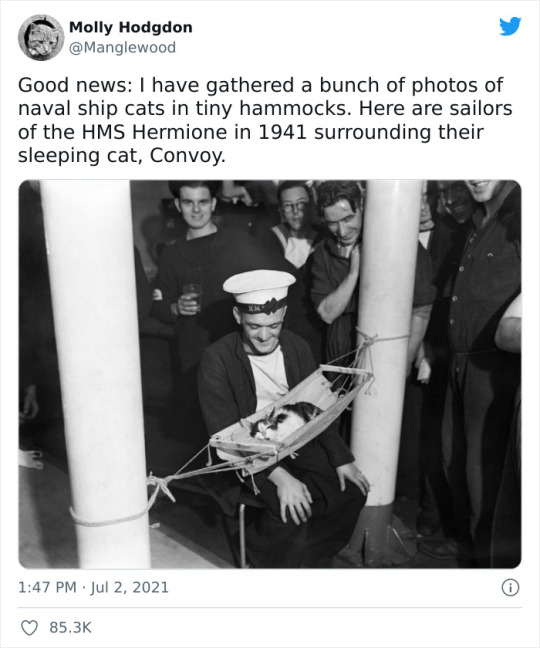
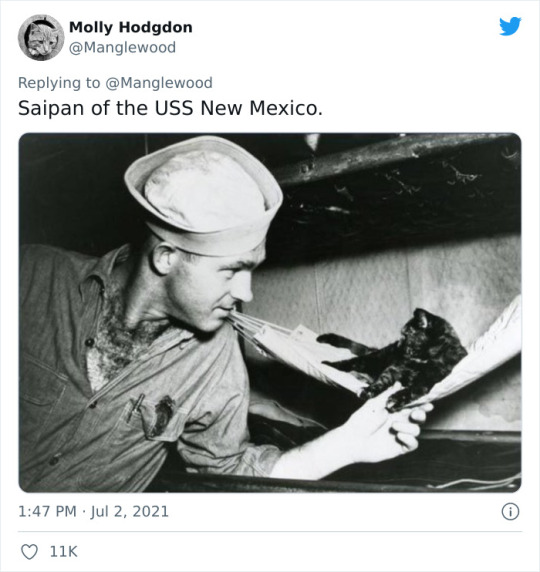



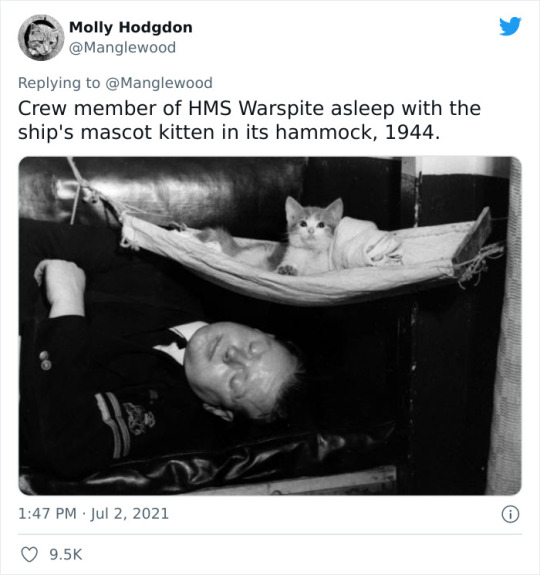
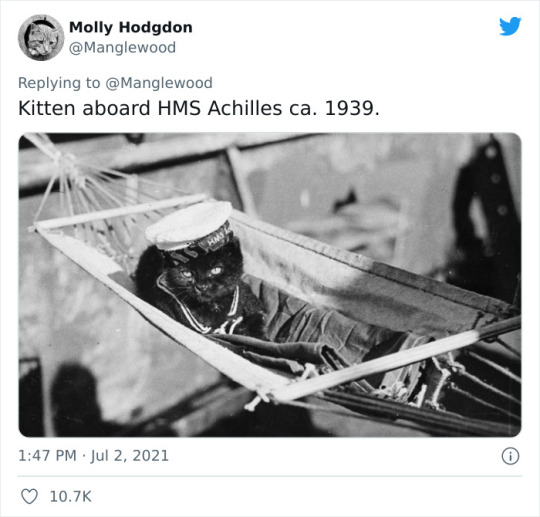
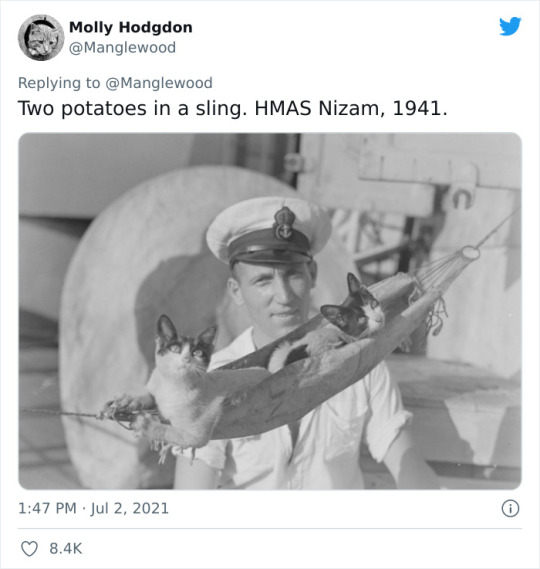
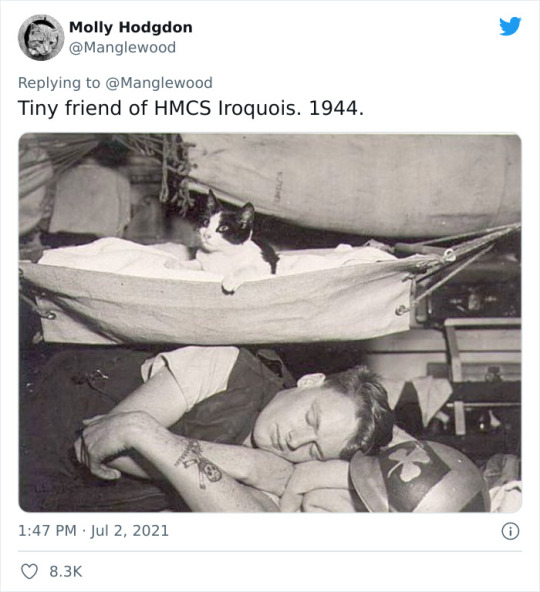
it used to be pretty common for there to be cats on boats. they'd take care of any rodents who would chew on ropes or wires and spread diseases. sailors were also superstitious and believed that having a cat aboard would bring good luck! this belief passed on to their wives, who kept cats - especially black ones who were believed to be extra lucky - at home in order to keep their husbands safe when at sea.
another popular superstition? that if a cat came aboard it was a sign of luck, but if it only boarded halfway and then left, it was a sign of bad luck.
most ship's cats are only found in modern times on private vessels, but they have roots going back to early history. one such example is the Vikings, who took cats with them on expeditions.
Sources: Ship's Cats, @Manglewood
#cats#navy#ww2#sailors#b&w photography#animals#b&w#vikings#history#ship's cats#superstition#good luck#bad luck#ocean#sea#water#twitter#hammocks#cute
50K notes
·
View notes
Text
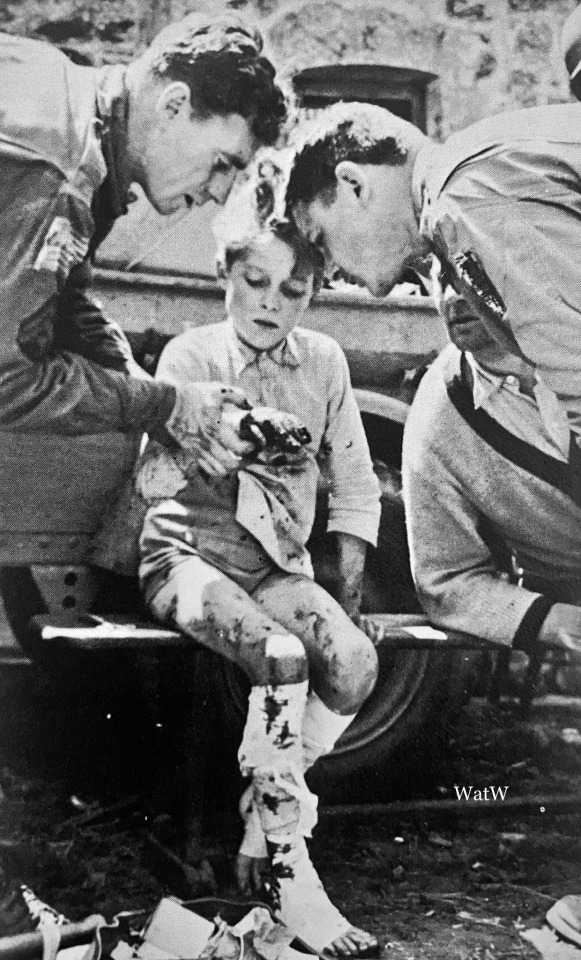
US medics attend to a young French boy injured during the allied advance after D-day - Normandy 1944
#world war two#ww2#worldwar2photos#history#1940s#ww2 history#wwii#world war 2#ww2history#wwii era#1944#Normandy#normandy landings#normandie#France#medic#dday
57 notes
·
View notes
Text
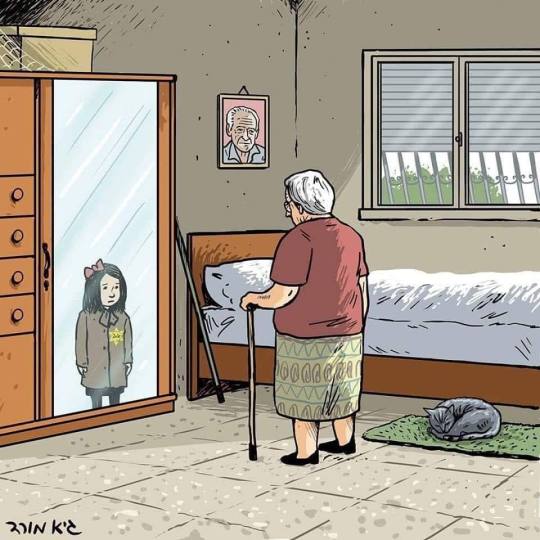
Never Again. Never Forget.
International Holocaust Remembrance Day.
Tomorrow, January 27.
1K notes
·
View notes
Text

December, 1943.
You are beautiful, even when you sleep.
I have COMMISSIONS OPEN if you're interested 🧡
Support my art on Ko fi ☕, please.
#stucky#bucky barnes#steve rogers#captain america#fanart#stevexbucky#myartwork#ww2#Sargent Barnes#Captain America#they're in love#Steve draws hearts#soulmates
1K notes
·
View notes
Text
With the Oppenheimer movie getting all the garbage attention, unfriendly reminder that the US occupied Okinawa after WW2 and decades later "returned" it to Japan. Not only is there still an American base there, but Okinawa is an independent nation, not an Island of Japan. Neither Japan nor the US should have at any point taken control of the island.
Both governments are currently complicit in the unlawful occupation of Okinawa. Anyone who wants to learn more can check out Rob Kajiwara on YouTube, who is an Okinawan activist pressing for the return of the island to it's people.
#nobody clown on this post#japan is still working against the ryukuan and ainu people#and the us actively discredited okinawa as an independent nation for 80 years#okinawa#ww2
2K notes
·
View notes
Text

“Human animals” is certainly an interesting way to talk about 2 million people, half of them children.
#israel#palestine#gaza#news#ww2#human rights#war crimes#genocide#democrats#republicans#politics#middle east#cri e
11K notes
·
View notes
Text

sure
#my art#band of brothers#ronald speirs#ron speirs#hbo war#ww2#dude standing there dot png#now for your viewing pleasure
2K notes
·
View notes
Text


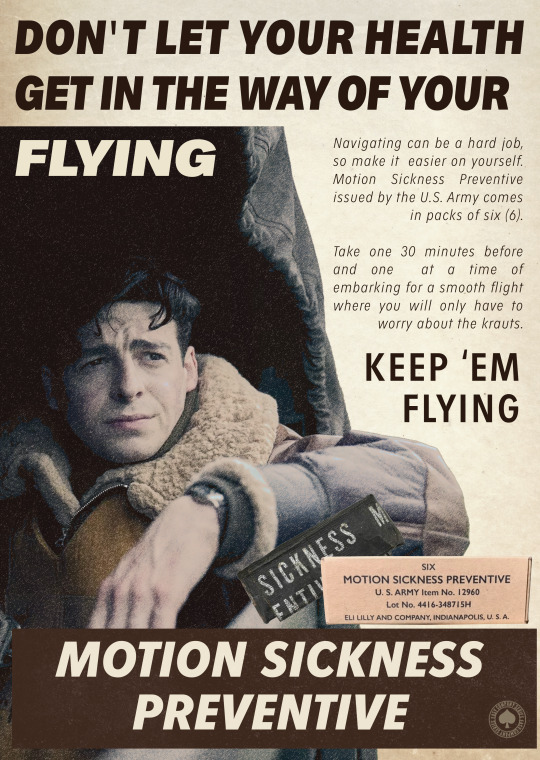
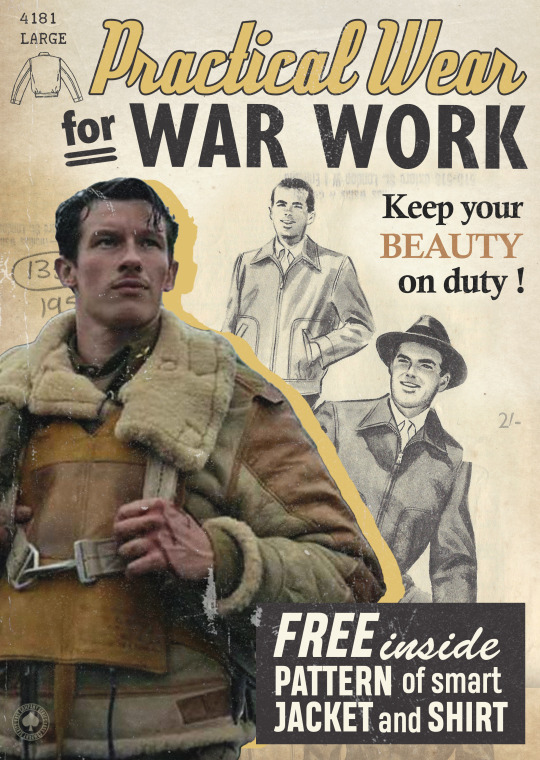
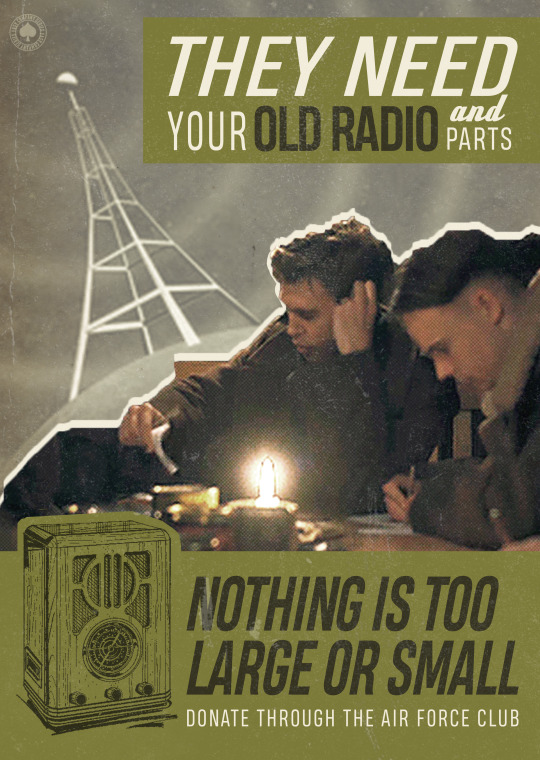

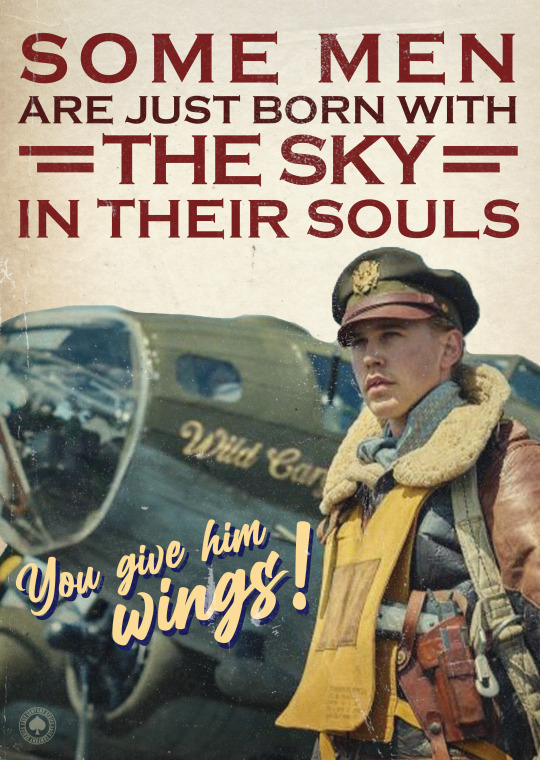
Masters of the Air - Vintage ads
Now also on my redbubble (X)
#masters of the air#mota#buck cleven#bucky egan#harry crosby#bubbles#kenny lemmons#ww2#vintage#ads#ww2 posters#mighty eight#guess who's alive and well fed?! it's my muse!#anthony boyle#raff law#austin butler#callum turner
745 notes
·
View notes
